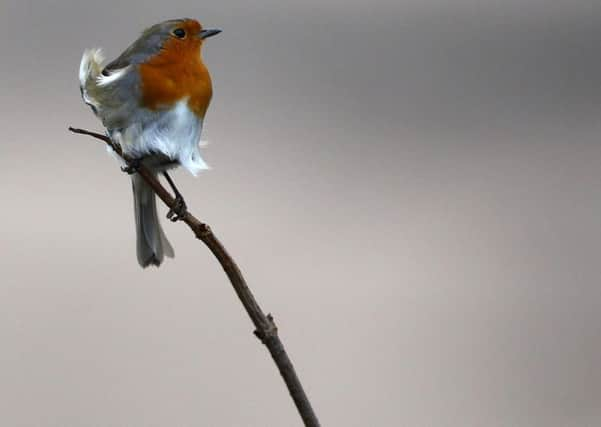Robins are playing out soap opera’s in our own gardens - Roger Ratcliffe
This article contains affiliate links. We may earn a small commission on items purchased through this article, but that does not affect our editorial judgement.


If you are lucky enough to have a pair nesting near your house they provide a virtual soap opera of entertainment and intrigue for as long as you care to look out of the window.
I have been aware of a breeding pair for some weeks, and as far as I can work out they have a domain - robins are fiercely territorial - of four or five gardens, amounting to an area that is roughly equivalent to one-and-a-half football fields.
Advertisement
Hide AdAdvertisement
Hide AdBut the question remains, where is the nest? Robins are extremely inventive when it comes to choosing a site. They can be too imaginative, in fact.
A pair once nested in the lectern of a church, forcing the vicar to deliver his sermons from the chancel, while another pair nested in the engine of a De Havilland Mosquito aircraft at an RAF base.
In both cases the broods fledged successfully.
When I lived in Ilkley my neighbours left their garage door partially open before going on holiday and returned to find robins nesting in the baggy pocket of an old waxed jacket hanging from a nail. They allowed the birds to come and go until their chicks had left the nest.
I believe my garden robins to be rather more orthodox thinkers, and their likely nesting site is a short but very thick length of cypress hedge in next door’s garden.
Advertisement
Hide AdAdvertisement
Hide AdIt is not unknown for them to commandeer the old nest of a blackbird or dunnock and do a bit of DIY with moss and hairs to make it habitable, and that may be the case here.
A cunning magpie seems to have worked this out, judging by its intermittent presence and the subsequent harassment it gets from the surprisingly pugnacious robins, but clearly the nest is too well concealed for any invading magpie to pose any serious danger.
The sight of two robins simultaneously gathering food in their beaks on my back lawn suggests that the eggs have hatched.
Advertisement
Hide AdAdvertisement
Hide AdIncubation takes a fortnight, during which time the male supplies his partner with food. He continues to do this for the first few days after hatching then both sexes share the task of feeding.
Bird books say that the plumage of male and female robins is identical. Recently, however, some birdwatchers have noticed a subtle difference in what might be described as the hairline, the point on their head where brown meets orange-red. The male’s is U-shaped, it is said, while the female has more of a V-shape, like the so-called widow’s peak.
I tested this theory with my garden robins and, sure enough, could detect a discernible variance when the birds were obliging enough to sit still on the back of a garden chair or patio pot and let me observe them with binoculars.
I have no idea if this method of sexing them is reliable, but I find myself muttering “hello Mr Robin” or “hello Mrs Robin” whenever I can see the hairline.